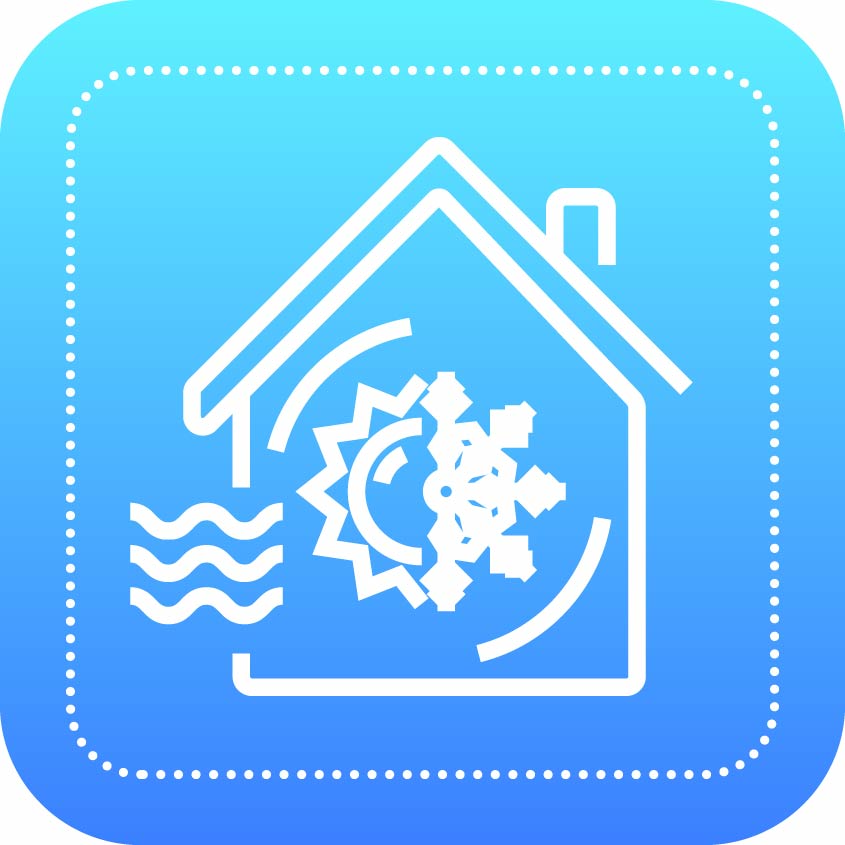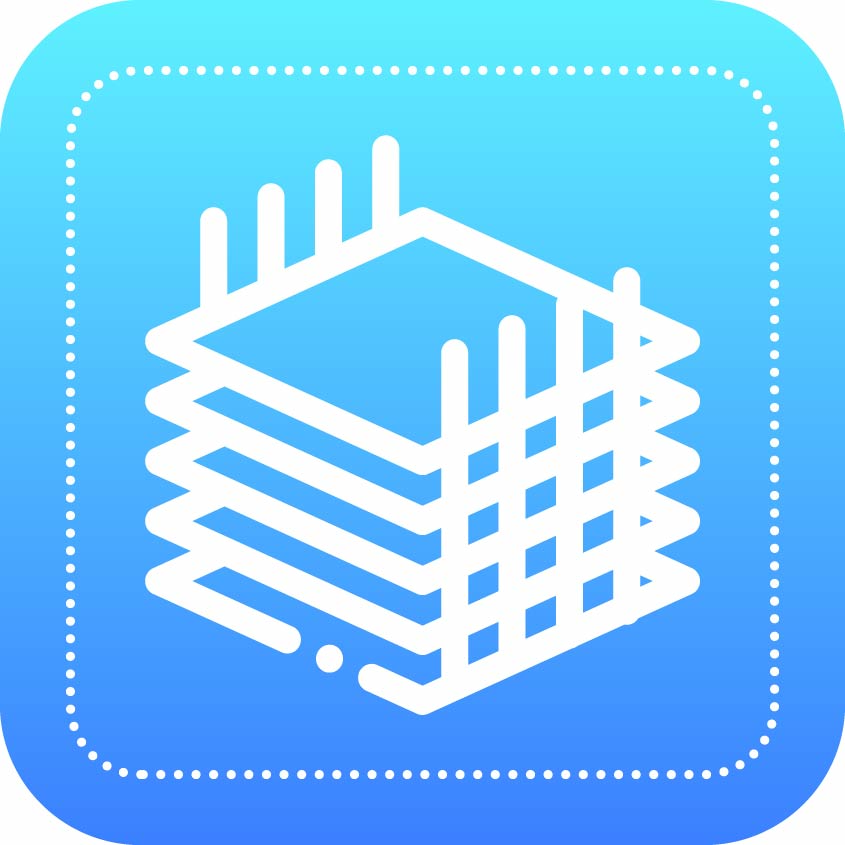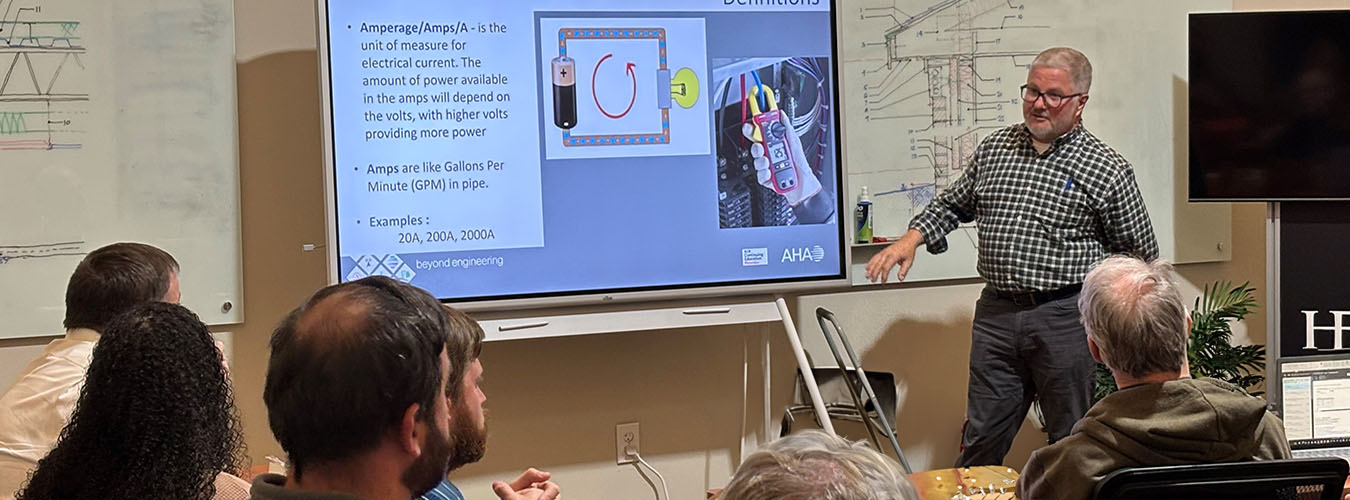
Technology

Audio/Visual Trends – What’s Next?
This presentation gives participants an overview of the latest technology in Audio/Visual equipment and how the integration fits into building designs. The newest trends include display and projection screens, voice technology, video walls, augmented reality and virtual reality. Included is a review of how technology is transmitted over IP, copper, twisted pair, and fiber optic cables.
AHA2023-12 AIA = 1HR-LU

Cabling 101 – What Kind of Cable is it?
This presentation illustrates the types of structured cabling systems used inside of buildings. These cabling systems include audio/visual, distributed antenna, ethernet, patient monitoring, telephone and television. You will review how signals are transmitted through various types of cable, connections and components.
AHA2023-9 AIA = 1HR – LU|HSW

Electronic Security Access Controls – Keeping Occupants Safe!
This presentation gives an overview of electronic security systems that provide a safe environment for building occupants. The integration in the design of various systems and how they fit with building architecture. This includes coordination with the building’s fire alarm and electrical systems.
AHA2023-10 AIA = 1HR – LU|HSW

Low Voltage Communication Systems (Emergency and Non-Emergency) Integration into Buildings
This presentation provides attendees with information on the three types of communication systems in high-rise buildings. Communi-cation systems that occupants would use during non-emergency times and systems that emergency responders would use in the case of an emergency.
AHA2023-1 AIA = 1HR – LU|HSW

Artificial Intelligence (AI) versus Architectural Intelligence (AI) – The Future Workplace
This course explores the evolution of AI from early computers to today, clearly defining key terms like “Big Data,” “Pattern Recognition,” and “Neural Networks.” It outlines AI applications in architecture while addressing legal and ethical concerns such as data security, accuracy, and copyright.
AHA2023-19 AIA = 1HR-LU

Energy & Sustainability

Massachusetts Commercial Energy Code Impacts
This course covers the evolving energy code requirements for commercial buildings in Massachusetts including Stretch vs Specialized “Net Zero” Code; targeted vs relative vs certified performance; and examples of common compliance paths.
AHA2023-2 AIA = 1HR – LU|HSW

COMcheck Building Envelope – Keeping it Simple!
The course will cover the background on how COMcheck is used by architects and engineers. The presentation focuses on the Building Envelope portion to verify whether a building passes current building code requirements in order to meet energy consumption and usage requirements.
AHA2023-2 AIA = 1HR – LU|HSW

Net Zero Carbon and the Energy Path Forward for Buildings
This course will cover the definition of Net Zero, how carbon is part of the problem and solution, opportunities to mitigate the operational carbon impact of buildings and review technologies to meet future Net Zero goals.
AHA2023-4 AIA = 1HR – LU|HSW

Reducing Carbon Emissions (BERDO/BEUDO)
This course covers the annual reporting and compliance requirements for buildings in Boston and Cambridge, including options to reduce carbon emissions through energy efficiency, fuel switching, and renewable energy.
AHA2023-18 AIA = 1HR – LU|HSW

Commissioning

Commissioning 101 – The Good, The Bad, The Ugly
Commissioning is required by many governing codes and certifications, but what is it? This course will cover the basics of commissioning, the overall process, and why it is vital for achieving an efficient building with happy, healthy occupants.
AHA2023-16 AIA = 1HR – LU|HSW

Retro-Commissioning 101 – It’s Better For Your Building!
Many buildings, particularly older or unique structures, have never been properly commissioned, which likely resulted in avoidable maintenance and energy costs over the lifetime of the building. This course will discuss the benefits of retro-com-missioning and how you can get your building operating as expected, or better!
AHA2023-16 AIA = 1HR – LU|HSW

MEP/FP

Electrification of Buildings
Electrification refers to the process of converting all fossil fuel based processes to electrically driven devices. This could be replacing gas or oil fired boilers with either electric boilers or heat pumps. The goal is to convert all energy based equipment to reduce carbon emissions by utilizing renewable energy.
AHA2023-14 AIA = 1HR – LU|HSW

Fire Protection & Fire Alarm 101
This course will give you an introduction to the different types of Fire Protection and Fire Alarm systems. Also, how Computational Fluid Dynamics (CFD) modeling is used for atrium smoke control system design.
AHA2023-13 AIA = 1HR – LU|HSW

HVAC Systems 101 – It’s Either Hot or Cold!
This course enhances your understanding and knowledge of the HVAC systems that a mechanical engineer would design as part of a commercial building. These include hot water systems, chilled water systems, rooftop variable air volume (VAV) systems, and variable refrigerant flow (VRF) systems.
HA2023-7 AIA = 1HR – LU|HSW

Plumbing Engineering 101 – “I Mean, It’s Just Plumbing”
This course is an overview of the strategy, design decisions and systems that a plumbing engineer would consider as part of a commercial building. These include storm water drainage systems, soil, waste and vent systems; domestic water systems; natural gas systems and plumbing equipment.
AHA2023-6 AIA = 1HR – LU|HSW

Solving the Siphonic Roof Drainage Mystery
This presentation enhances your understanding and knowledge of how Siphonic Roof Drainage Systems work and the appropriate applications to use this type of roof drainage system.
HA2023-5 AIA = 1HR – LU (HSW)

Welcome to Power School – Electrical Engineering 101
This course enriches your understanding of the best practices electrical engineers use for calculating the correct electrical needs, choosing the most efficient equipment, effective strategy, applicable distribution, and metering needs for your building. This includes an overview of the Electrical Code and the impact it has on building occupants.
AHA2023-8 AIA = 1HR – LU (HSW)

BIM / VDC

BIM Services & 3D Laser Scanning
This course provides an overview of our BIM/VDC services, with a focus on Coordination and 3D Laser Scanning. Understand the importance of 3D coordination and clash detection, which aids in identifying and resolving conflicts early. You’ll also gain insight into 3D laser scanning and the scan-to-BIM procedure, resulting in accurate as-built models that enhance decision-making and documentation.
AHA2023-17 AIA = 1HR-LU









